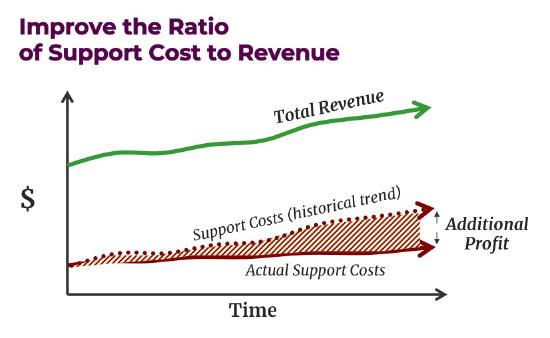Measurement Matters v6
Abstract
Successful adoption of the Knowledge-Centered Service (KCS®) methodology offers profound benefits for any information-intensive organization. For most organizations, KCS is transformational in that it both changes and increases the value proposition of the organization. The benefits realized in the short term can be tracked using traditional, transaction-based metrics. The longer-term benefits are in new areas of value creation and therefore require new value-based measures.
Extending ideas in the KCS v6 Practices Guide and the KCS v6 Adoption & Transformation Guide, this paper helps KCS leaders:
- Understand the dynamics of a successful KCS adoption
- Distinguish the four phases of a KCS adoption
- Identify the appropriate measures and indicators for each phase
- Recognize the key trends, relevant milestones, and indicators that reflect progress.
Equipped with these concepts and measures, we can explain the value the organization is creating for those we serve (our customers) as well as the positive impact on the broader organization. KCS leaders must be able to articulate the value to executives in order to sustain the financial and leadership commitment required to maximize the benefits created by implementing KCS, which go way beyond traditional, transaction-based, incident handling efficiency.
The Big Target: Ratio of Support Costs to Revenue
KCS benefits include improving:
- Customer experience and loyalty
- Employee job satisfaction and loyalty
- The ratio of support cost to revenue
All of these benefits are important, but for executives, it is often necessary to boil results down to one factor: money, in the form of cost savings.

Figure 1: We can quantify support value by expressing support costs as a percentage of revenue.
If we can show that we are changing the ratio of support costs to revenue, the delta equals profit (or margin). For the top line, we may use revenue or products shipped or licenses sold. The goal is to normalize support costs against something that represents the top-level results. If we can reduce the ratio of support costs to revenue as well as improve customer and employee experience and loyalty, what’s not to like?
For organizations that serve an internal audience, replace the revenue line with the number of employees or desktops supported.
This concept is very appealing to the C-level executive and this is why the executive buy-in can create a problem: not because it is hard to understand (they love this picture), but because we must temper their excitement and inevitable impatience for results. The benefits of KCS are profound, but the results take two to three years to realize. We are changing the behaviors of both the requestors and the responders and that takes patience and persistence.
Updates to the Measurement Matters v6 paper were made to reflect the updates to the KCS v6 Adoption & Transformation Guide in October 2022
